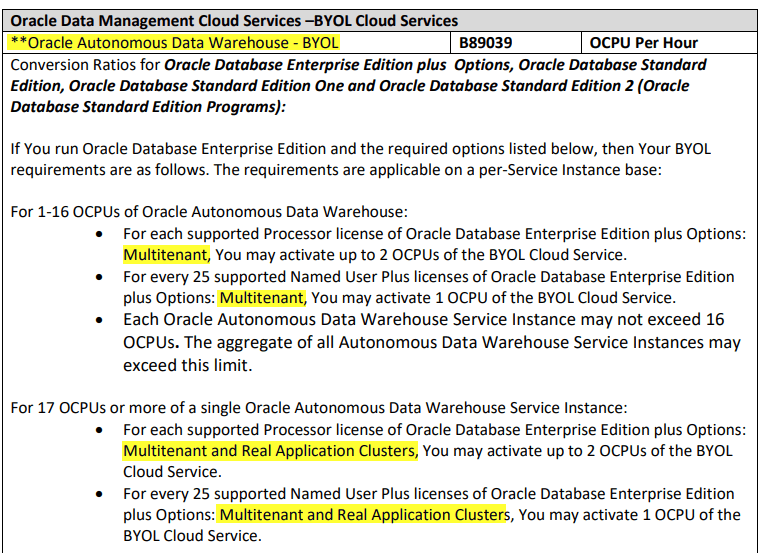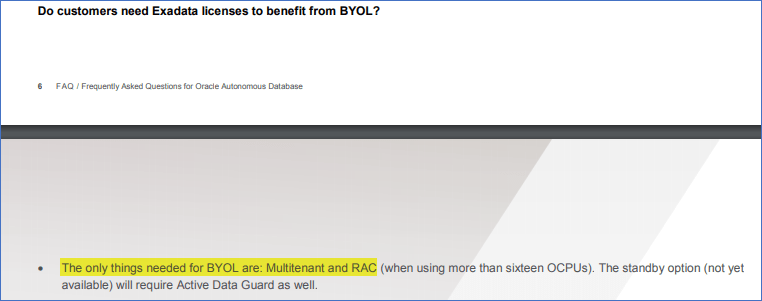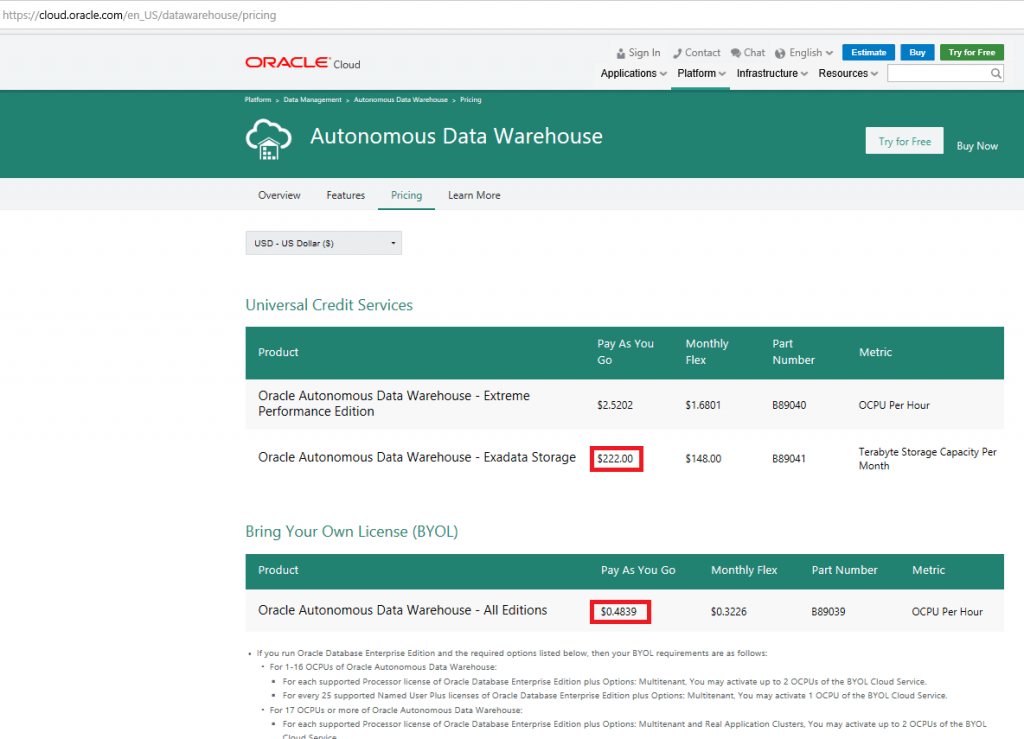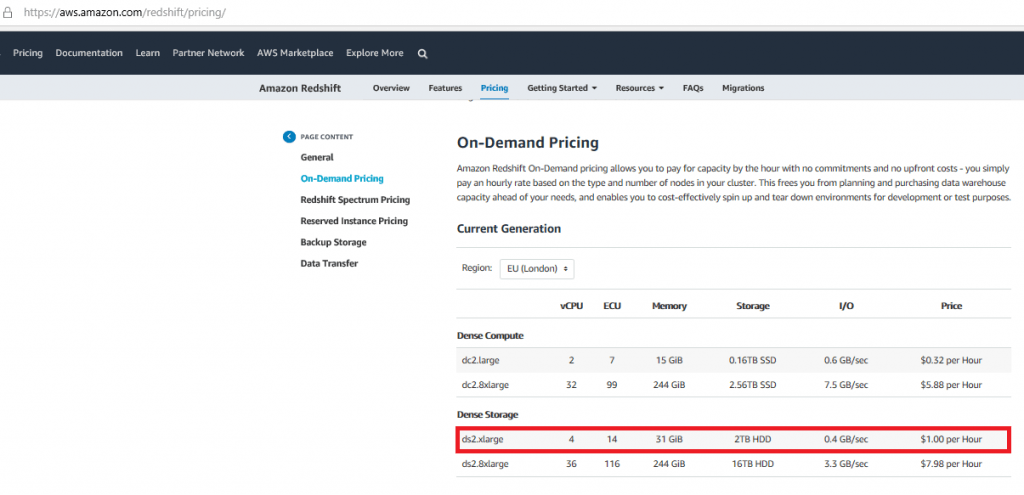5 min read
An Independent Perspective on Oracle’s “You’re Spending Too Much on AWS” Campaign
At Version 1, our independent and experienced Oracle licensing consultants (covering all aspects of enterprise licensing) provide expertise to customers globally to ensure that they get the best value from their assets. Based on our licensing experts’ engagements with our enterprise customers in recent weeks, there is an increasing demand for clarification on the terms and conditions of the Oracle campaign: ‘You’re Spending Too Much on AWS’. Paul Bullen, Principal License Consultant and Independent Oracle Expert presents in the following blog post an up to date and informative overview of the factors and conditions to take into consideration for customers seeking more information on this offer.
The ‘You’re Spending Too Much on AWS’ campaign by Oracle is based on an offer that guarantees a reduction in AWS costs for customers. Following an analysis by the independent licensing experts at Version 1 of the details of the offer, the following primary points can be noted if you are seeking a concise overview:
- The guarantee was originally valid until the 31stof May 2019, this has now been extended (due to demand or lack of uptake?) to 30th November 2019.
- Workloads must run in Oracle’s Automated Data Warehouse Cloud or Oracle Autonomous Transaction Processing Cloud
- The offer only applies to the Bring Your Own License (“BYOL”) offerings of the above services
- It is asserted that workloads will receive the actual number of OCPUs/VCPUs required (though the word ‘required’ is subjective)
- Time completed to perform the work is a key factor: Oracle’s supporting marketing asserts that the Oracle Automated Database Services are significantly faster than Redshift
As is commonplace with any ‘special offer’ with licensing – the fine print or what isn’t stated in the marketing materials can be crucial in accurately planning your budget and comparing costs. One ‘gap’ in information encountered by our customers to date is that it has not yet been publicised or articulated directly in the campaign that both Oracle Automated Data Warehouse Cloud and Oracle Autonomous Transaction Processing Cloud (the only services to which this offer applies) require the Oracle Multi-Tenant database option as a pre-requisite, even though (as far as initial inquiries have found) the customer doesn’t explicitly see any benefit from pursuing this option.
Until the 30th of November 2019, Oracle is waiving[1] the cost of this option: after which, it will be mandatory for customers to have licenses in place for Multi-Tenant ($17,500 list price per Processor + 22% annual support) and, additionally in the case of over 16 OCPUs (cores), Real Application Clusters ($23,000 + 22% annual support). These options are not required for deployment on Oracle DBSE2; this is worthy of consideration.
Customers should therefore include these very significant additional costs in any comparison between Oracle’s Autonomous Database Offerings and any other cloud provider to accurately weigh up the costs.
Additionally, once the standby option is made available, customers will also have to additionally license Active Data Guard ($11,500 list price per Processor + 22% annual support).
These options are unlikely to be in surplus (assuming a well-managed license estate) for customers to deploy after November 2019 and, when compared to typical Oracle enterprise license deals, they are unlikely to attract large discounts. This need to buy more license is unlikely to be seen favourably by customers; especially when the licenses are a fixed quantity with an upfront perpetual cost and associated annual support fees – and so not flexible compared to instance shapes.
It should be noted that it would appear that any customer wishing to take advantage of the guarantee would need to share with Oracle their AWS based workload profile and existing AWS costs. Should Oracle be reducing the AWS bill in such circumstances then it does pose the question as to whether the AWS environment is properly tuned i.e. could the same savings be made on AWS if the workload is re-assessed.
Should a customer get any credit from Oracle because of this guarantee, it will be applied to the customer’s Universal Credit (Oracle’s mechanism to allow a ‘pool of cloud credits’). This suggests that the customer’s bill is not reduced as in a ‘pay for only what you use model’, rather the customer will receive credits to use on other Oracle Cloud services (which wouldn’t be viewed as a cost saving if the customer does not specifically need them).
In summary, there will be a very significant cost increase (from December 2019) for anyone using Oracle’s Automated Database Cloud services due to the need to buy licenses for Multi-Tenant and potentially Real Application Clusters; these could add an unexpected cost of ~$50k per OCPU.
Time-Based Consumption Comparison
Whilst many modern applications can make use of a serverless architecture spinning up infrastructure as required for short executions before shutting down again databases are not typically well suited to this. Most if not all databases in the majority of businesses will be running at least for the duration of business hours if not 24×7.
Also given some options such as Oracle storage for autonomous is not payable by the hour, we have decided to show a cost comparison based on 1 month’s consumption[2]. We have used the same AWS instances and storage Oracle quote in their performance benchmark comparison at this link: – https://go.oracle.com/database-comparison-aws.
We believe this comparison better reflects the typical database usage and therefore costs likely to be incurred.
| Specification | Oracle
ADW BYOL |
AWS
i3.16xlarge |
AWS
ds2.xlarge (8 nodes) |
| Cores | 16 | 32 | 16 |
| Storage | 16TB | 16TB | 16TB |
| Price Per Month | $9,312 | $4,309 | $5,952 |
References:
Oracle’s Autonomous Database Cloud service offering and guarantee here
Oracle PaaS and IaaS Universal Credits Service Descriptions here
Screenshot from Oracle’s service descriptions (a near-identical description is also present for the Oracle Autonomous Transaction Processing service)

Oracle FAQ for Oracle Autonomous Database here

Oracle Autonomous Datawarehouse Pricing used (25th February 2019)

AWS Pricing Used (25th February 2019)


[1] “The requirement to have a Multitenant option license or the Real Application Cluster license is waived for this Cloud Service until November 30, 2019. If You continue to use this Cloud Service after November 30 2019, then You will be required to meet all licensing policies described above or transition Your use to the non-BYOL SKU for this Cloud Service.”. Source : P54 of Oracle PaaS and IaaS Universal
[2] The 1-month consumption projection is based on Oracle and AWS Website pricing at time of writing (late Feb 2019) show in references section. 1 month = 744 hours (31 days) continuous usage. Oracle price based on Pay as You Go. AWS price based on demand. OCPU is assumed to equate to 1 core of a physical processor. vCPU is assumed to equate to 1 thread of 1 core of a physical processor. Storage has been matched based on available AWS instance-based storage. AWS EU (London) Region used. All figures exclude licensing.
About Version 1
Our independent and experienced Oracle and Microsoft licensing consultants (covering all aspects of enterprise licensing) provide expertise to customers globally, ensuring customers get the best value from their assets. The scale of Version 1 means we also have technical consulting experts to provide a one-stop shop for moving to the Cloud. If you would like more information about Oracle Technology Enterprise Agreements, speak to our SAM & Licensing experts today.